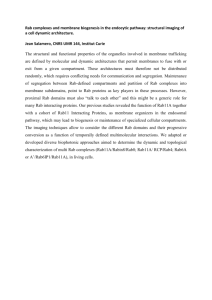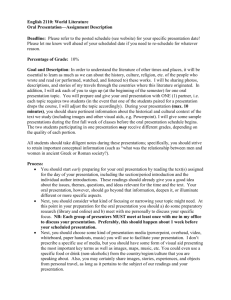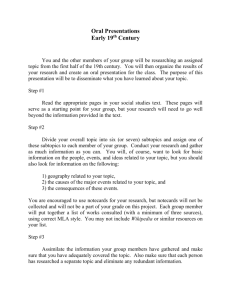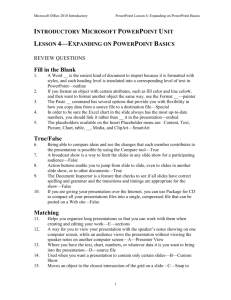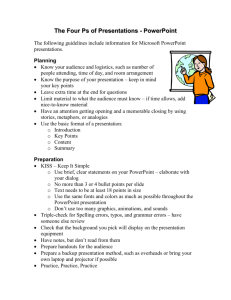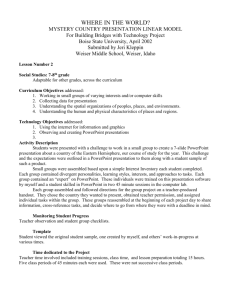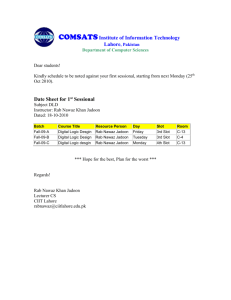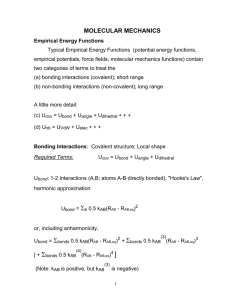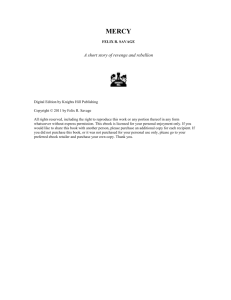RAB Meeting Presentation and PowerPoint Guidelines
advertisement
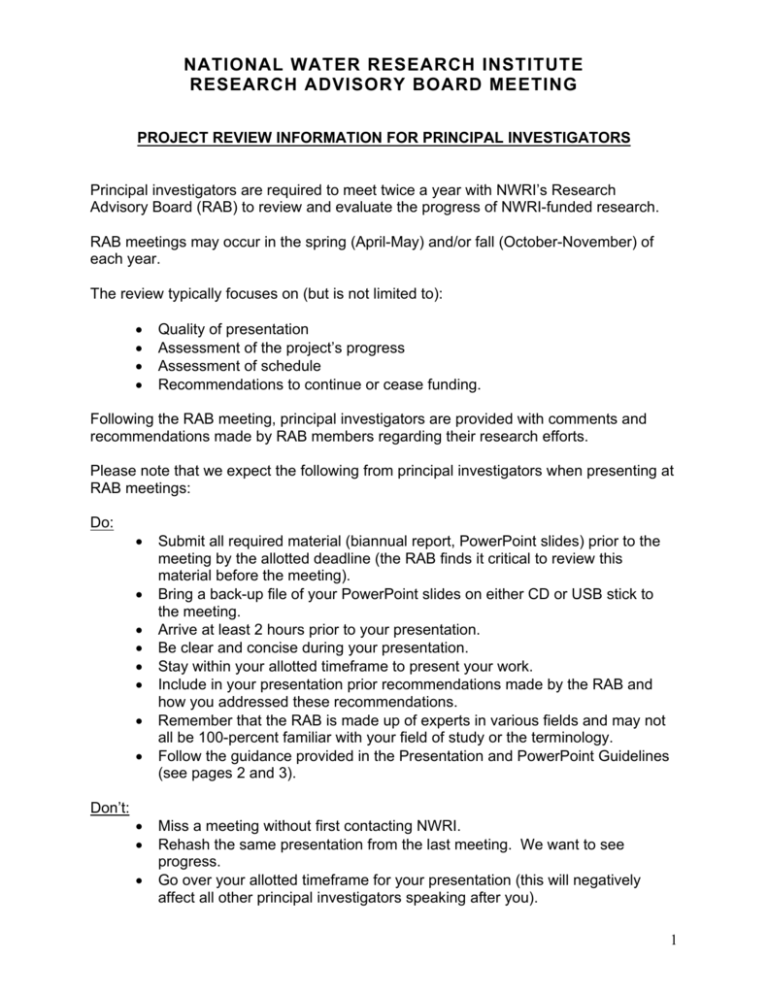
NATIONAL WATER RESEARCH INSTITUTE RESEARCH ADVISORY BOARD MEETING PROJECT REVIEW INFORMATION FOR PRINCIPAL INVESTIGATORS Principal investigators are required to meet twice a year with NWRI’s Research Advisory Board (RAB) to review and evaluate the progress of NWRI-funded research. RAB meetings may occur in the spring (April-May) and/or fall (October-November) of each year. The review typically focuses on (but is not limited to): • • • • Quality of presentation Assessment of the project’s progress Assessment of schedule Recommendations to continue or cease funding. Following the RAB meeting, principal investigators are provided with comments and recommendations made by RAB members regarding their research efforts. Please note that we expect the following from principal investigators when presenting at RAB meetings: Do: • • • • • • • • Submit all required material (biannual report, PowerPoint slides) prior to the meeting by the allotted deadline (the RAB finds it critical to review this material before the meeting). Bring a back-up file of your PowerPoint slides on either CD or USB stick to the meeting. Arrive at least 2 hours prior to your presentation. Be clear and concise during your presentation. Stay within your allotted timeframe to present your work. Include in your presentation prior recommendations made by the RAB and how you addressed these recommendations. Remember that the RAB is made up of experts in various fields and may not all be 100-percent familiar with your field of study or the terminology. Follow the guidance provided in the Presentation and PowerPoint Guidelines (see pages 2 and 3). Don’t: • • • Miss a meeting without first contacting NWRI. Rehash the same presentation from the last meeting. We want to see progress. Go over your allotted timeframe for your presentation (this will negatively affect all other principal investigators speaking after you). 1 NATIONAL WATER RESEARCH INSTITUTE RESEARCH ADVISORY BOARD MEETING GUIDELINES FOR SPEAKER PRESENTATIONS 1. Presentation should either be given by the Principal or Co-Principal Investigator. Graduate students, however, are welcome (and encouraged) to make the presentation, if appropriate. 2. New project presentations are limited to 40 minutes. 25 minutes will be allotted to your presentation, with 15 minutes allowed for questions and discussion. 3. Continuing projects reviews are limited to 25 minutes. 15 minutes should be sufficient time to succinctly summarize your progress. Ten minutes will be allowed for questions and discussion. This question and discussion period is critical for RAB review of your project. 4. All speakers will be held to the maximum of 40 minutes for new projects and 25 minutes for continuing projects. These time allotments will be strictly enforced. 5. When reporting on a continuing project, begin your presentation with a summary of how you addressed the recommendations/questions from the previous meeting if applicable. 6. All questions will be held until the end of your presentation. 7. Every speaker is required to submit their PowerPoint presentations to NWRI in advance of the meeting. The presentations will be pre-loaded into the laptop and copies will be sent to the RAB members prior to the meeting. 8. At the meeting, all presenters are urged to review their PowerPoint presentations on the NWRI laptop prior to the session to ensure that there are no “glitches.” 9. All presenters must bring a back-up file of their PowerPoint presentation on either CD or USB stick to the meeting. 10. We will not make photocopies at the meeting. If you wish to pass out material (other than the presentations) at the meeting, prepare the photocopies in advance. You will need at least 40 copies. 2 NATIONAL WATER RESEARCH INSTITUTE RESEARCH ADVISORY BOARD MEETING GUIDELINES FOR PREPARING POWERPOINT SLIDES Use the following guidelines for preparing your PowerPoint slides: a. For headlines, use 32 font size or larger b. For text, use 18 font size or larger c. Use color combinations that provide clarity. i. Dark background (e.g. blue) with white or yellow text seems to work best. ii. Or simple black on white d. Use simple fonts (e.g. Arial) that are easy to read e. Avoid complicated graphical slides i. Identify units on both axes ii. Use maximum weight for lines where possible. f. Keep logos and identification banners to a minimum. They are unnecessary and complicate your slides. g. Rule of thumb: If you cannot read text on your computer screen from a distance of ten feet, we will NOT be able read it from the back of the room. 3
